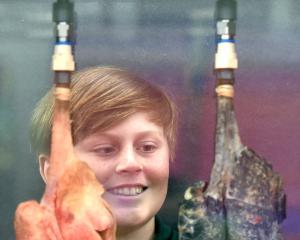Some of Dunedin's top cultural attractions could face a ''significant'' drop in visitor numbers if tourist entry fees are introduced, Dunedin city councillors have been warned.
However, any decision not to introduce the new fees could end up costing the council nearly $100,000 a year, a staff report has suggested.
Councillors would consider the idea of tourist-only entry fees for cultural attractions at a meeting of the council's finance committee on Monday, more than a year after the new system was suggested.
However, a report by Dunedin Public Art Gallery director Cam McCracken, to be considered at the meeting, recommended the proposed new charges be scrapped.
While such a move could generate an annual profit totalling $96,000 from year two, upfront costs - including new reception counters - would contribute to a loss of more than $300,000 in the first year, he said.
An even bigger blow could be felt by some the city's leading cultural institutions, including the DPAG and the recently redeveloped Toitu Otago Settlers Museum, he warned.
Both could expect ''significant'' drops in visitor numbers if the system was introduced, potentially by up to half, he warned.
That was in part because the Otago Museum - governed by a trust and outside council control - did not support the introduction of entry fees for non-residents.
It already received some council funding but also generated 40% of its revenue from ''value-added'' activities, which could be threatened by the introduction of an entry fee, he said.
And, without a uniform approach across the city, visitors would likely switch from visiting the DPAG and settlers museum facilities to the still-free Otago Museum instead, he said.
It was expected visitor numbers could fall by 35%-50%, which could threaten tenants running the settlers museum cafe and the revenue it generated for the museum, among other possible effects, he said.
The report was backed by market research - carried out by Ben Parsons and Associates for the council - which showed about half of all visitors to the facilities considered entry fees for non-residents to be a good idea.
However, a significant drop in visitor numbers would result, in part because some locals would no longer bring out-of-town guests to the attractions, the research also concluded.
The change would also mean a host of extra costs for the council, including $200,000 for the possible introduction of a new museum card identifying residents, changes to reception areas and extra staff, he said.
There would also be a drop in income from the Dunedin Chinese Garden, even as its visitor numbers increased, if its existing entry fee was cut to bring it into line with other council-owned attractions, he said.
In total, the new system would be expected to cost the council $415,000 in upfront capital costs in the first-year, and $550,610 in ongoing costs each year.
That would be offset by an ongoing jump in revenue from the settlers museum, DPAG and the Chinese Garden facilities, estimated to be worth $647,589 a year, Mr McCracken said.
That meant a total loss of $318,000 in the first year, due to upfront capital costs, followed by a profit of $96,978 the following year.
Mr McCracken's report also noted the idea of entry fees had been tried, and abandoned, by Dunedin's cultural attractions in the past, as well as elsewhere in New Zealand and internationally.
Entry fee costs
Capital cost of introduction: $415,000- Includes foyer upgrades, signage, marketing and museum card.
Ongoing annual costs: $550,610- Includes loss of retail income, grant income and Chinese Garden admissions revenue, marketing costs and museum card costs.
Estimated annual income: $647,589- Annual fees revenue from DPAG ($204,450) Toitu Otago Settlers Museum ($361,800) and Dunedin Chinese Garden ($81,339).
Total (year 1): -$318,022
Total (year 2): $96,978





